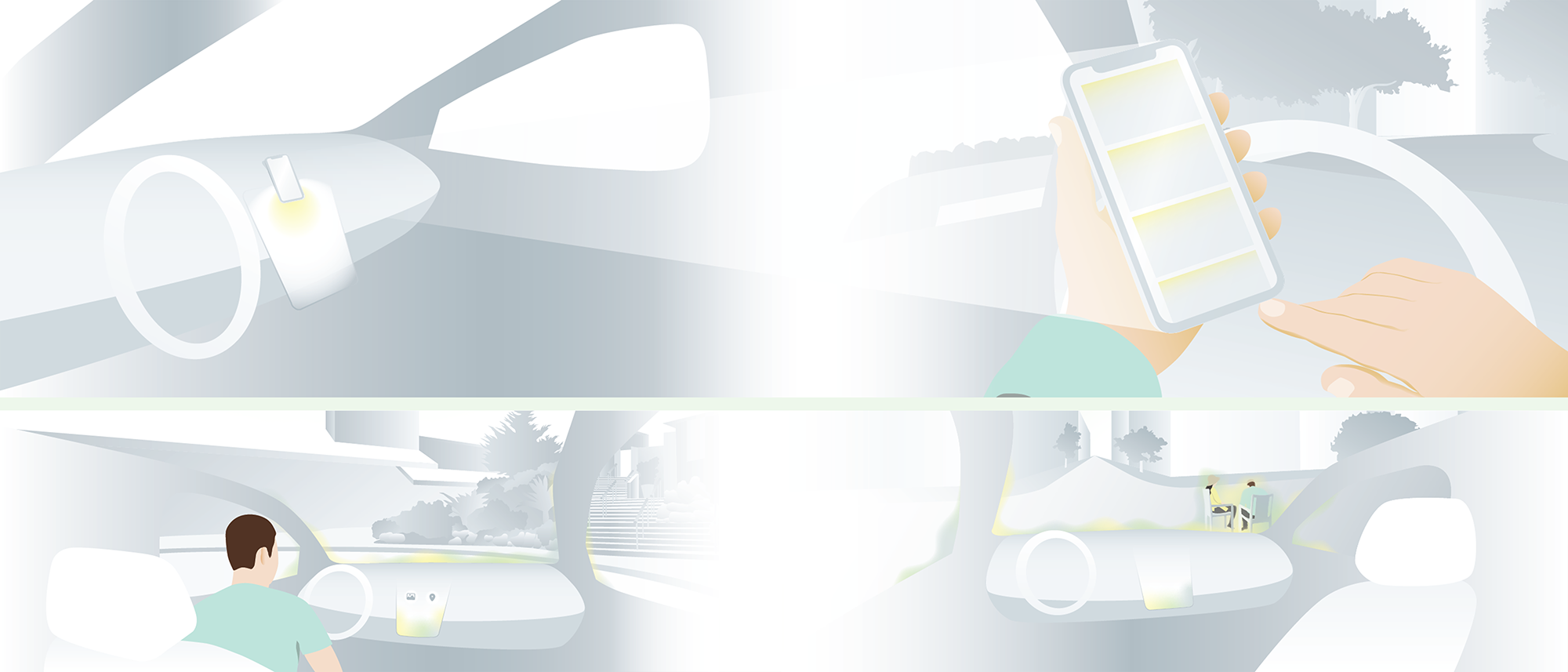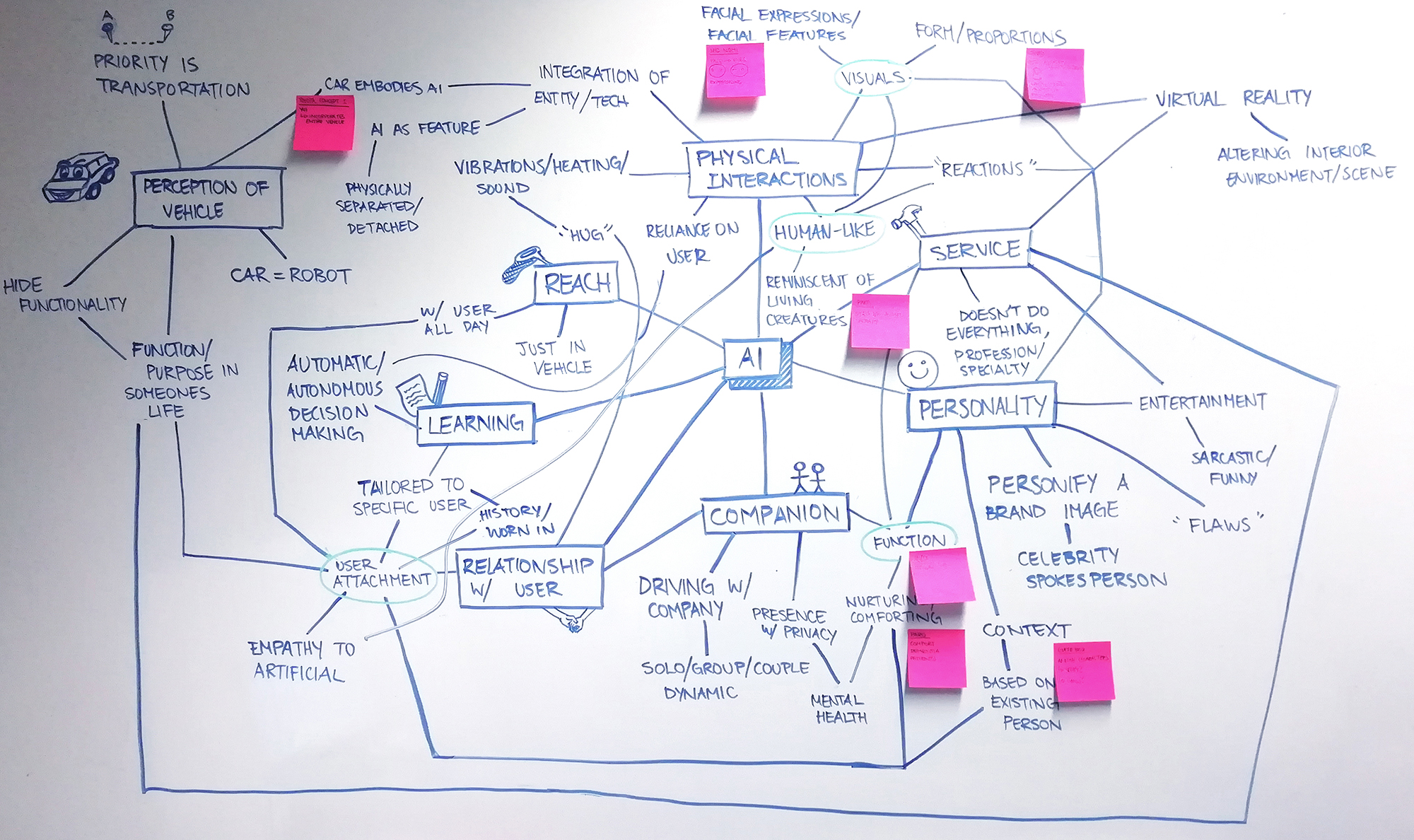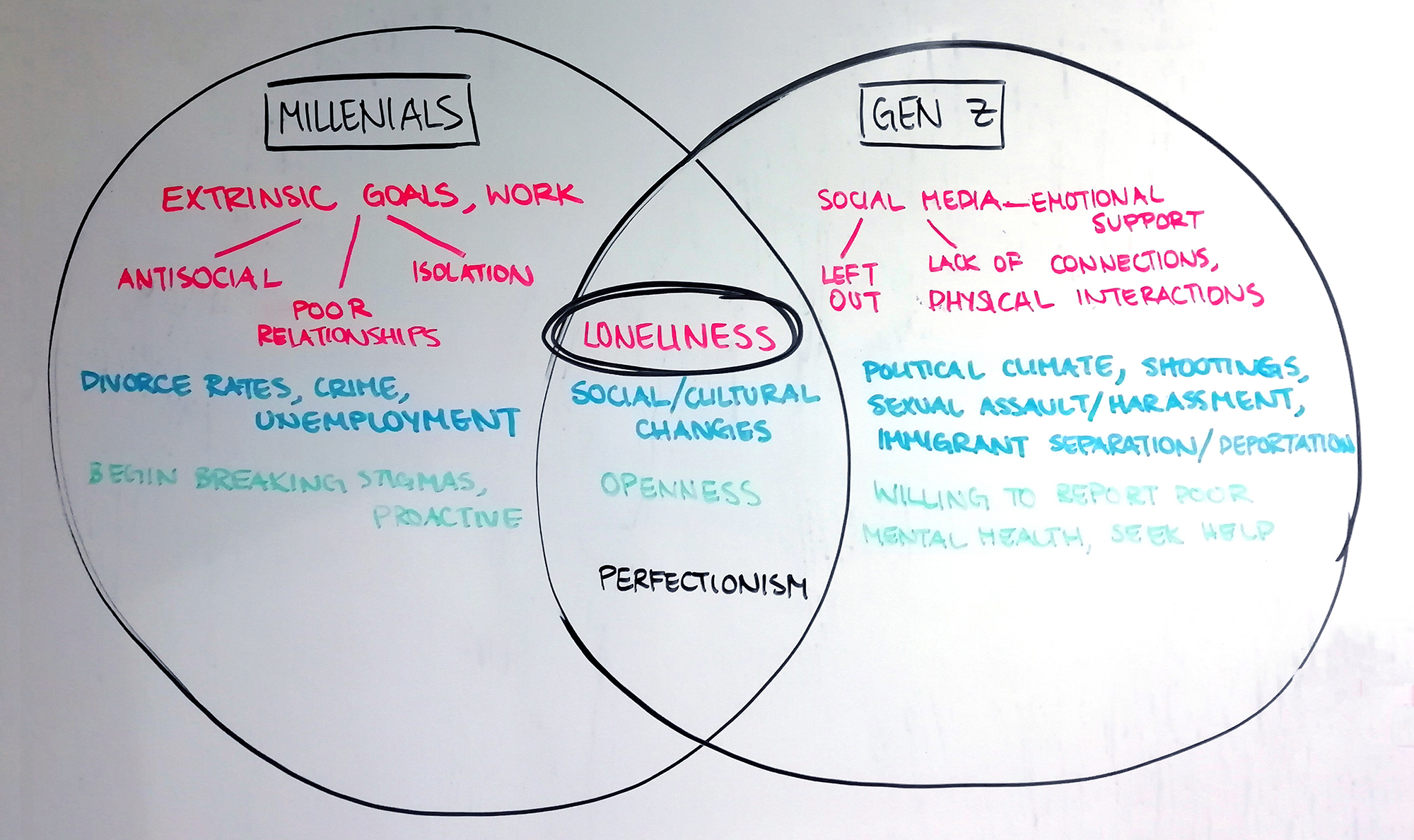UX Internship
Fiat Chrysler AI Concept
I researched in the spaces of Artificial Intelligence (AI), Millennials, and Generation Z and created an in-vehicle AI system aimed at combatting mental health in modern users.
- Role
- UX Intern
- Company
- Fiat Chrysler Automobiles
- Year
- 2019
- Duration
- 3 months
Fiat Chrysler Automobiles (FCA) is a global automobile company housing brands including Alfa Romeo, Dodge, Jeep, and Maserati. As a UX intern tasked with inspiring their UX team, I set forth to break the mold and create a nontraditional automotive product. I presented the final deliverable to the FCA Design Board.
Problem
Combating mental health within a car
With modern generations showing poor mental health and increasing amounts of loneliness, how do we create an automotive product that decreases loneliness considering the parameters of a car environment?
Solution
Using AI to decrease loneliness
My solution was an in-vehicle AI system. On top of standard car functions and entertainment, the conceptual system also includes an AI companion. By anthropomorphizing the car and promoting user to vehicle relationships, this companion morphs the car into a unique environment emphasizing memory building.

AI product opportunity
Interested in creating an AI product, I started my process exploring the emerging trend of AI assistants. My research on existing products led me towards the concepts of user attachment and AI independence/reliance.


- Features and proportions
- Humanlike
- Resembling living animals
- Automatic decisions
- Personality
- Individual characteristics
- History/timeline
- Unique user relationship
- “Worn-in”
Loneliness in the target audience
To establish a concept, I needed to specify an audience. To account for developing technology, I set my concept for 25 years in the future. With this criteria, I determined that target users who would own cars during that time are current Millennial and Generation Z customers. To identify issues specific to that group, I conducted a research survey of existing public data on the two generations and found ties in poor mental health and loneliness.


Introducing memories in the solution
With an identified problem scope, I was able to specify objectives that I wanted my product to solve. These objectives aimed to combat mental health and decrease loneliness through interactions, inclusion, relationship building, and relaxation. While converting the objectives into a cohesive solution, I found that a theme of memories could be used to solve each point and tie them together.
1
2
3
4
Visual exploration
Research also influenced the visual design of my AI. Findings on user attachment guided me to personify the AI entity with lifelike movements. Mental health issues found from research on Millennials and Generation Z prompted me to incorporate calming and positive colors. Meant to be used in the vehicle, the AI also has gradual movements to reduce distraction.



Final system

Autonomous entity
An AI that travels around the windows and interacts with the user as an in-vehicle companion.
Center console
The touchpoints of the system where users can manually access information. The center console stores previous sounds, sights, locations, connections, and memories.

View an in-depth video of the center console:
Interactions around a theme of memories
The system follows a theme of memories to promote inclusion and relationship building. There are five primary interactions created that support this theme.





Reflection
Concept to reality
Although being a concept meant to inspire the UX team, I feel my project could use more grounding. To further strengthen and develop the concept, I would research into the company’s brands and heritage and tie it to existing products and images of FCA.
This internship introduced me to the automotive space and accompanying car culture. I faced a number of challenges working in an unfamiliar industry with rich history, tradition, and set processes. However, it was a welcomed challenge that left me with stronger communication skills and more design exposure. More importantly, it left me with a desire to further explore potential experiences unique to the space of a vehicle.